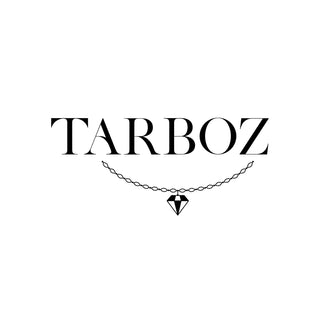

Buy tourmaline at Tarboz
Often, people don't just talk about tourmaline, but rather about the tourmaline group , which includes several minerals that are structurally very similar. The variety of tourmalines is therefore particularly large. This variety is naturally reflected in the selection in Tarboz's shop.
Tourmalines are solid solutions with a rather complex chemical composition , which took some time for researchers to decipher. However, many of the mysteries surrounding tourmaline have now been scientifically solved.
The name tourmaline
The word tourmaline has been known since around 1700 and likely originates from the Sinhalese word "thuramali." This language is spoken by the Sinhalese people of Sri Lanka. It is believed that the physician and botanist Paul Hermann brought the term back to Germany after a trip to Ceylon, present-day Sri Lanka. The word "thurmali" roughly translates to "stone of mixed colors."
Tourmalines can range in color from blue to red to yellow to green. The color intensity can vary depending on the light. Many tourmaline color varieties have their own names. Here's a small selection:
- Aphrizite: a dark grey schorl
- Brazilian Emerald or Emeralite: a green, transparent tourmaline
- Brazilian ruby or Siberian ruby: a red, transparent tourmaline
- Canary Tourmaline: a light yellow tourmaline
- Chameleonite or Deuterolite: a tourmaline whose color changes depending on the lighting
- Iochroite: a violet tourmaline
In addition to the diverse color facets depending on the chemical composition, the effect of pleochroism may also occur. Depending on which side you view the tourmaline from, the crystal can appear in different colors. Perhaps you initially thought your new tourmaline was dark blue-reddish, but from the other side it suddenly turns out to be blue or jet black.
Some tourmalines suddenly display stunning yellow, blue, or green hues, or even a cat's eye effect. The color variety also includes bicolor and multicolor tourmalines. Take your time to browse the tourmalines from Tarboz and find your favorite color!


History of Tourmaline
Tourmaline was first described in Europe in the book "De lapidibus" ("On Stones") by the Greek philosopher and naturalist Theophrastus of Eresus (371–287 BC). The stone was probably known in the Arab world since at least the 9th century. In the 12th century, schorl, which occurs in river sediments in the Ore Mountains, was described as the first mineral from the tourmaline group in Europe.
Tourmaline was already very popular as a gemstone in the Middle Ages, although people probably didn't distinguish it from other gemstones. When the Crown of St. Wenceslas was made for Emperor Charles IV in the 14th century, a red stone was used, but it was probably mistaken for a ruby for a long time.
In earlier Ceylon, the term turemali was probably used to describe a variety of stones, particularly bluish quartz and greenish-yellow topaz. At that time, it became clear that some of the stones discovered in Ceylon were particularly remarkable. In 1703, a stone from there is said to have reached the Netherlands, which attracted attention because it attracted ash when heated.
This property of tourmalines had already been described by Theophrastus. In the 18th century, further mineral descriptions with various properties were added to the name schorl. Several analyses by scientists followed, and it became increasingly clear which chemical elements can be found in tourmalines, including boron and lithium. By 2018 , 26 elements had been identified in tourmalines .
Classification and sorting soon began, but it wasn't until the late 1940s that researchers at the Massachusetts Institute of Technology were able to determine the structure of tourmaline . By 2011, a recognized classification had emerged with eleven minerals and 22 possible end members, divided into three groups with 14 subgroups. Today, this list already includes 36 minerals .


Tourmaline sites
Tourmalines often occur as accompanying minerals in rocks , including ore deposits. They are also highly resistant to weathering. As so-called borosilicates , tourmalines are found almost everywhere. They have been found in rocks of varying composition.
Many known deposits and mineral deposits are now located in Sri Lanka, South America, Africa, and the USA. Tarboz gemstones originate from various countries. Your personalized tourmaline will be delivered with a certificate of origin.
Tourmaline in mythology
Among the ancient Greeks, the myth prevailed that the stone was formed from the urine of lynxes. Lynxes covered the earth with it, and only very experienced collectors could discover the stones . Pliny the Elder contradicted these mythological accounts in his work "Naturalis Historia" from 77 AD. He also introduced the Latin name lyncurium. Nevertheless, similar myths surrounding tourmaline persisted well into the Middle Ages. Some artistic depictions featuring foxes have also survived.
Given this splendor of color, what could be more fitting than calling tourmaline the "gem of the rainbow" ? An ancient Egyptian legend tells of tourmaline rising from the earth toward the sun, using a rainbow to do so.
Esotericism and Tourmaline
As a healing stone, tourmaline is said to have healing effects on the nervous system and is used to treat shingles. It is also said to have anti-inflammatory and pain-relieving effects on joint pain. We cannot scientifically prove this, but blue tourmaline in particular is a very harmonious stone that radiates calm. Yellow tourmaline also has a very positive effect on us. This stone represents happiness and joie de vivre.
Chemistry of Tourmaline
All minerals in this gemstone group are composed according to the same chemical formula . The stones are about as hard as quartz and have a white streaked surface. The exact composition determines their color. A special feature of these crystals is an effect in which opposing crystal ends become electrically charged due to pressure, torsion, or temperature changes.


The largest tourmaline
Due to the sheer variety of these stones, it's difficult to say which tourmaline is the largest in the world. One particularly valuable stone, however, is the Paraiba tourmaline , which captivates with its intense color and unique shades. They are also quite rare. These can easily be more expensive than many other gemstones, even more so than diamonds!
Care of tourmaline
For home use, it's usually sufficient to clean a slightly soiled stone with a soft cloth and a little water . Tourmalines can also be cleaned with steam, although ultrasonic cleaning is not recommended.
Tourmaline jewelry at Tarboz
Particularly beautiful tourmalines make for stunning jewelry. The red variety, rubellite, is often used. Famous rubellites are often found in the display cases of FC Bayern Munich, as the Bundesliga championship trophy and the DFB Cup are set with red tourmalines. Incidentally, tourmalines vary greatly in price and quality. At Tarboz, we select only the most beautiful tourmalines for you! Many designs and variations are possible for jewelry. Creative jewelry designers are sure to enjoy working with tourmalines. Browse for an exclusive tourmaline in the Tarboz Gemstone Shop now!
